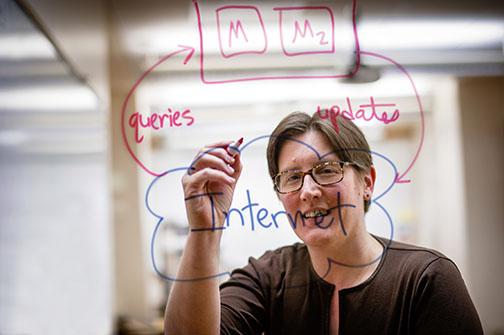
Beyond the bits In a single day, you may chat with a friend by video on your cellphone, download a novel, and check the news — all using the Internet. Each activity uses software applications that deliver data to your computer or device through a network. Think of the networks as systems of roads that transport information to and from the massive data centers set up by companies such as Google, Facebook, and Microsoft.
Adding applications (or apps) to the Internet is pretty easy. But access to the system of network roads is relatively closed. Only a small number of companies provide the hardware and software that manage the networks’ infrastructure. This software decides what path Internet traffic takes to its destination.
Back in the 1970s, computer hardware and software were difficult to modify. Today, computers and devices easily can be customized, but the infrastructure and hardware of the networks haven’t changed much. “Networks have been stuck in this older era,” says computer science professor Jennifer Rexford ’91. “Many companies, including Google and Microsoft, can program their servers, change how they store data, yet they have a network they cannot modify.” For example, Facebook controls its content, but not how it’s delivered to your device.
Rexford is working to change this approach by giving companies easy-to-use tools to modify the way their networks operate, which should decrease download times for end users.
A new language Rexford, with professor David Walker and colleagues at Cornell University, has developed a family of programming languages called Frenetic that makes it easier to modify the network infrastructure. The goal is for modifications to be accessible by programmers while making network communications more energy-efficient, secure, and reliable. There are even ways to make network changes when data are in flight. A particularly dense data package could be re-routed from a one-lane road to a highway to prevent a traffic jam. Researchers already are using the Frenetic software, and companies are interested in the technology because it enables “a richer ecosystem” of networking modifications, says Rexford.
Inventing the Internet Rexford says many of the major network-equipment vendors, such as Hewlett-Packard, also support the changes, providing a rare alignment of academia and industry. “This is what I like about the Internet — a lack of a barrier to innovate. It’s a perfect storm for fundamental change in the way the Internet works, and a chance for the research community to have influence on what actually happens,” she says. “We are never done inventing the Internet.”
